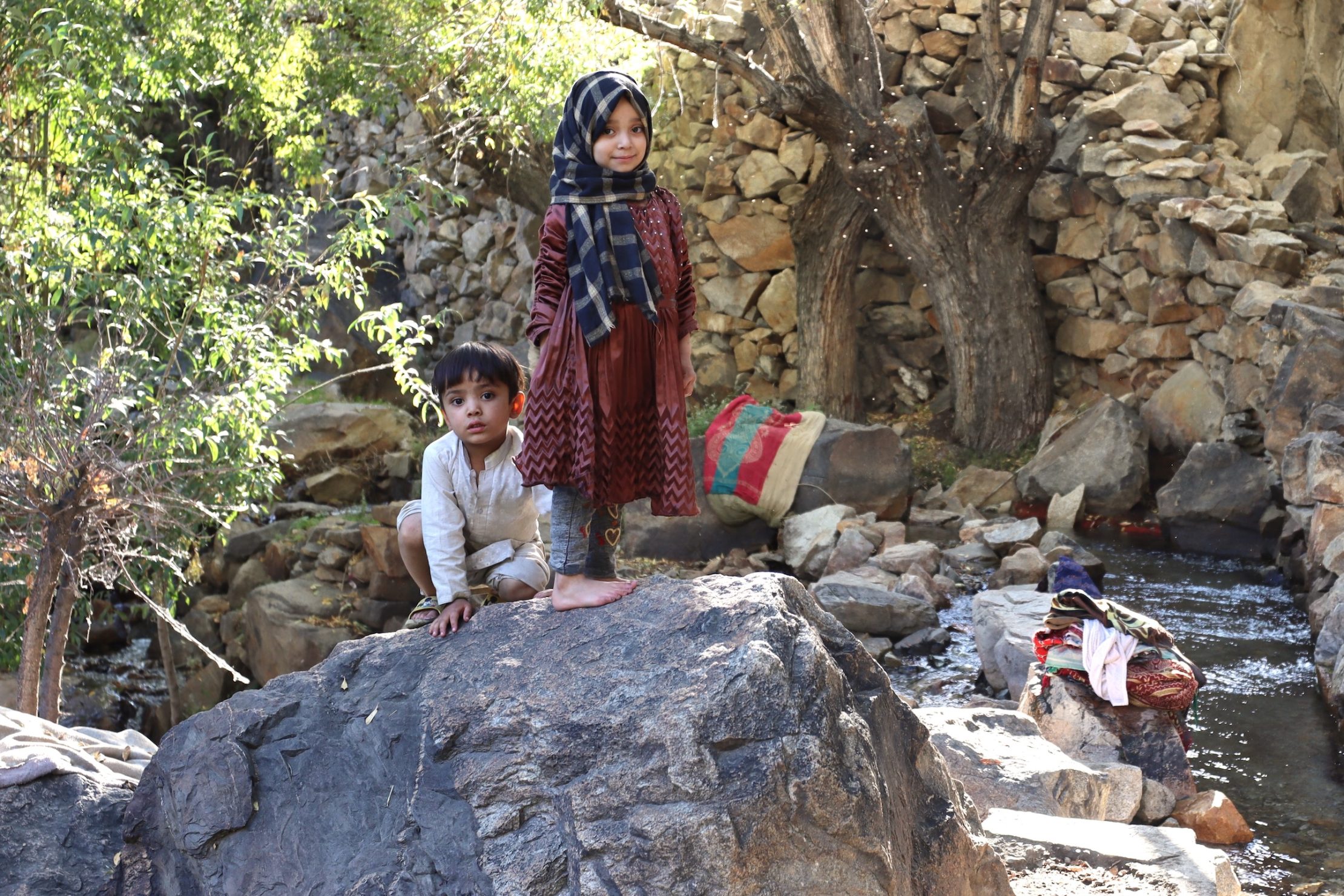
Pakistan’s northern terrain is home to 13,032 glaciers, the reservoirs of which lusciously feed into the Indus River, the country’s primary water source. This glacial runoff sustains agriculture, drinking water and hydropower for millions of people and supports a delicate balance of natural ecosystems, forming the backbone of Pakistan’s economy and food security.
Rising global temperatures, however, are accelerating glacier retreat at an unprecedented rate. An estimated 10,000 glaciers in Pakistan are receding, disrupting natural water cycles and increasing the unpredictability of water availability. While glacier melt initially causes an increase in river flows, over time, the loss of ice threatens to reduce water supply, making both floods and droughts more frequent and severe.
One of the most destructive consequences of glacial melt is triggering glacial lake outburst floods (GLOFs), sudden and violent events in which glacial lakes, swollen with meltwater, breach their natural barriers. These outbursts can release millions of cubic meters of water and debris, destroying homes, infrastructure and farmland. In Pakistan’s northern valleys, 3,044 glacial lakes have developed, 33 of which are highly volatile and at high risk of bursting. In the provinces of Gilgit Baltistan and Khyber Pakhtunkhwa, approximately 7.1 million people lie in harm’s way.
The catastrophic floods of 2022 underscored Pakistan’s climate vulnerability, with GLOFs and torrential rains devastating the lives of 33 million people, pushing more than 9 million below the poverty line and causing over US$30 billion in economic losses and flood damages, with at least $16.2 billion estimated to be needed for rehabilitation and reconstruction. Seventy-five GLOF events were reported in Gilgit Baltistan and Khyber Pakhtunkhwa alone that year, inundating a third of the country and taking at least 66 lives. The toll extended beyond infrastructure and livelihoods – it also deeply affected education, particularly for girls.
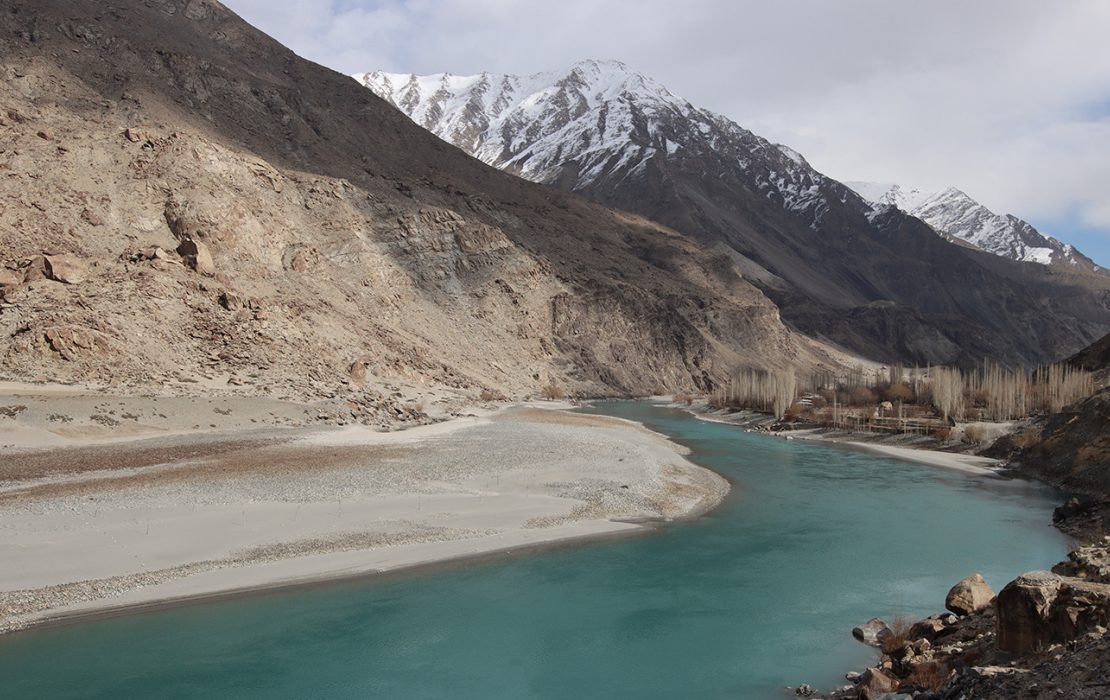
Kharmang District, Gilgit-Baltistan. Photo: UNDP Pakistan
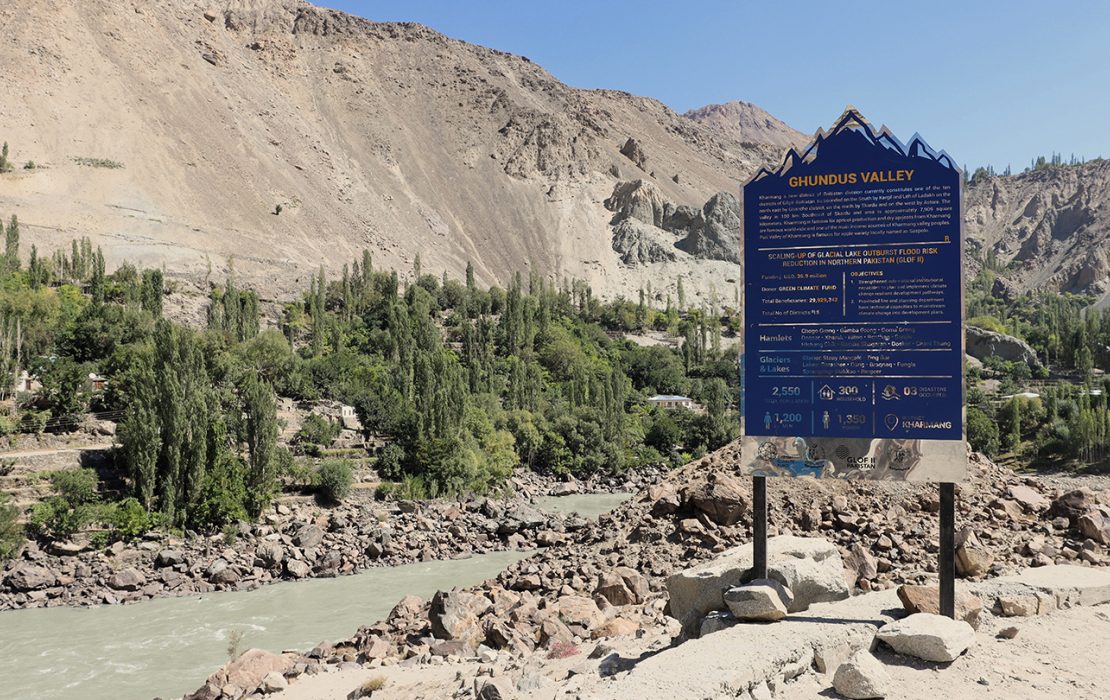
Ghundus valley. Photo: Shameen Raza / UNDP Pakistan
A community at the crossroads of climate change
In the district of Kharmang, Gilgit Baltistan, nestled between towering mountains and verdant pastures, lies the valley of Ghundus. Here, glaciers cling to the peaks, their icy waters feeding the streams that snake through the valley, eventually merging into the mighty Indus River.
The approximately 2,550 people inhabiting the valley – around 300 households – rely heavily on agriculture, livestock and forestry for their livelihoods. Their lands provide food and income, which in turn sustains access to education and healthcare.
Rising temperatures, however, have made the valley increasingly vulnerable to GLOFs, flash floods and water shortages. These climate impacts further intensify the burden of responsibility on women and girls, with girls frequently dropping out of school to help their families manage household chores and farming.
Despite the importance of education in breaking the cycle of poverty, in Kharmang women’s literacy rate stands at just 37 percent, lagging far behind the 67 percent literacy rate for men – a stark reminder of the region’s persistent gender gap.
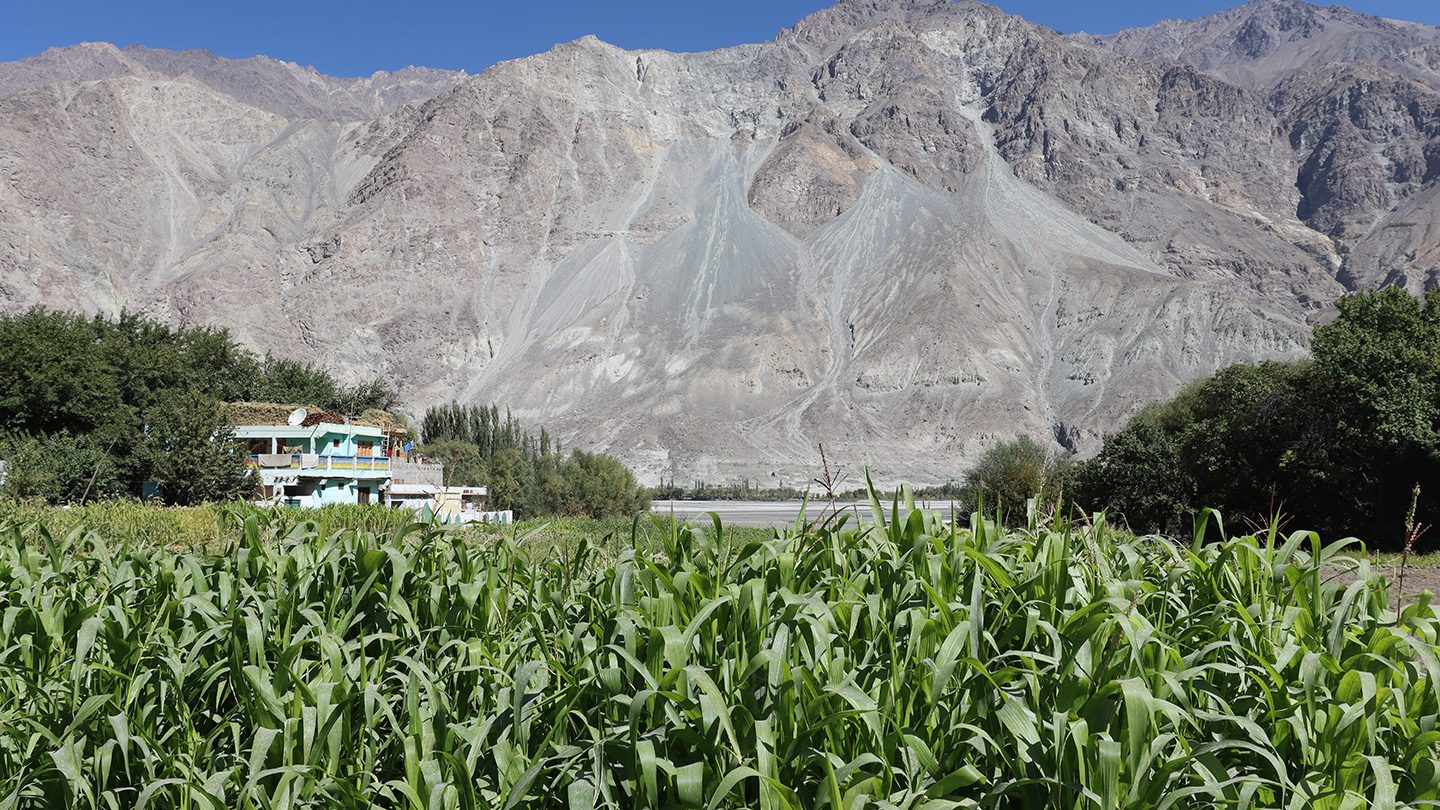
The Government of Pakistan has cited the agriculture-food-water nexus and gender equality as top priorities in the country’s National Adaptation Plan (2023) and Nationally Determined Contribution (2021). Photo: Jamil Akhtar / UNDP Pakistan
Water scarcity and the struggle for education
Owing to the disruption of water cycles, the Ghundus valley has been experiencing a sporadic flow of water. With the spiking incidence of GLOFs and flash floods, huge amounts of glacial runoff is being lost, leaving the lands barren and unable to support plantation.
With no proper water channels in the valley, women and girls are often the ones who have to walk for miles uphill to fetch water for their fields and their households. Despite their efforts, without a reliable water supply, crops fail and girls’ education is often the first casualty as families struggle to afford school fees.
Since 2021, however, much has changed in the valley. Three rehabilitated irrigation schemes – measuring up to 600 metres in length – now efficiently channel glacial water directly into agricultural fields, benefiting up to 600 people. The channels have reduced water wastage, ensuring a stable water supply for crops and alleviating the burden on women and girls.
The impact has been profound. Reduced water wastage is ensuring consistent irrigation. Women and girls no longer have to fetch water, freeing time for education. And improved yields are providing stable incomes, helping families afford school fees.

The project has rehabilitated 317 irrigation channels, amounting to more than 132 km in length, in the 24 most climate-vulnerable valleys of Gilgit Baltistan and Khyber Pakhtunkhwa. Photo: UNDP Pakistan
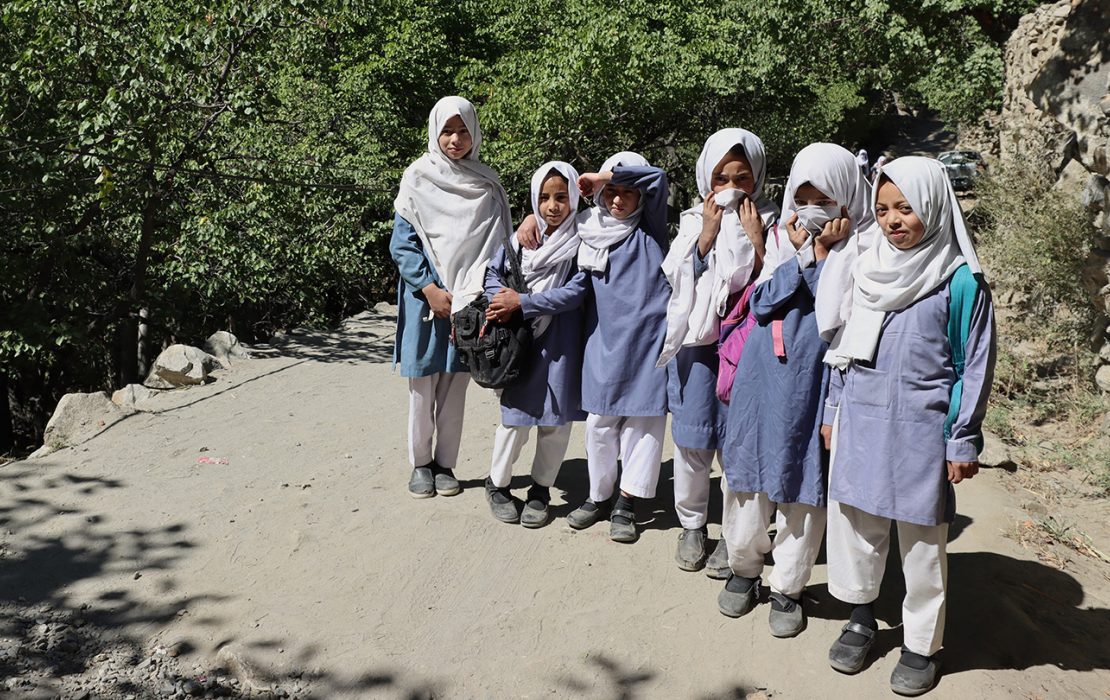
The rehabilitated irrigation systems have given young girls in the Ghundus valley more time and energy to focus on their studies. Photo: Shameen Raza / UNDP Pakistan
Empowering girls through water security
For many girls in Ghundus, water security means education security.
Samana, Ruqaiya and Masooma play leading roles in farming, from planting and ensuring that the land is nourished with water, to harvesting, drying the vegetables and selling them to a vendor. Their families grow a range of crops, including wheat, barley, onions, tomatoes, potatoes, corn and apricots. The seeds they plant not only put food on the table but also sustain their livelihoods and support their education.
Samana, 20, teaches at the school in her village. She earned a bachelor’s degree from Skardu Degree College, travelling miles away to complete her studies. She is experiencing first-hand the benefits of the newly restored irrigation channels: "We do not have to walk all the way up the hill to fetch water or to make sure that it is brought down to the fields by one of us. Now, it just flows to the fields through the irrigation channel without getting wasted. Our vegetables are well nourished, and we do not have to worry about the fields drying up anymore."
For students like Anees, a 10th-grader with ambitions of becoming a government officer, the difference is also profound. This simple change has given her more time and energy to focus on her studies. "We go to school without any worry about having to fetch water," she says.
But the challenges brought on by climate change and rising temperatures are not over for young ambitious girls like Muneeba and Saleha, both in 9th grade, who aspire to become a doctor and a lawyer, respectively.
"Sometimes, the weather gets too hot, and we have to walk for about two hours in the heat to get to school," says Muneeba.
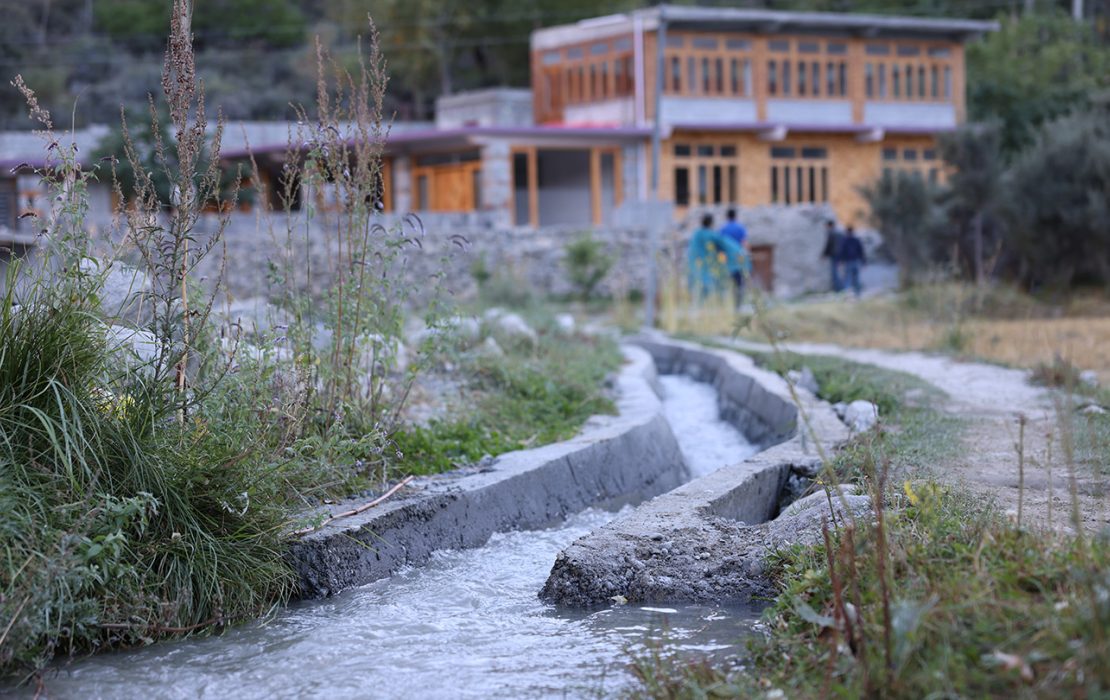
The rehabilitated channels have reduced water wastage. Photo: UNDP Pakistan

For many girls in Ghundus, water security means education security. Photo: Shameen Raza / UNDP Pakistan
The transformative power of water access
For the people of Ghundus, access to water is more than just an agricultural necessity – it is the foundation of economic stability, gender equality and educational opportunity. The rehabilitation of irrigation channels has brought visible change, easing daily hardships and unlocking new possibilities for the community.
Water now symbolizes resilience, opportunity and a pathway to a better future. The once-unavoidable trade-off between securing water and securing an education is no longer applicable. Girls who once spent hours fetching water can now spend those hours in school, building the knowledge and skills that will shape their futures.
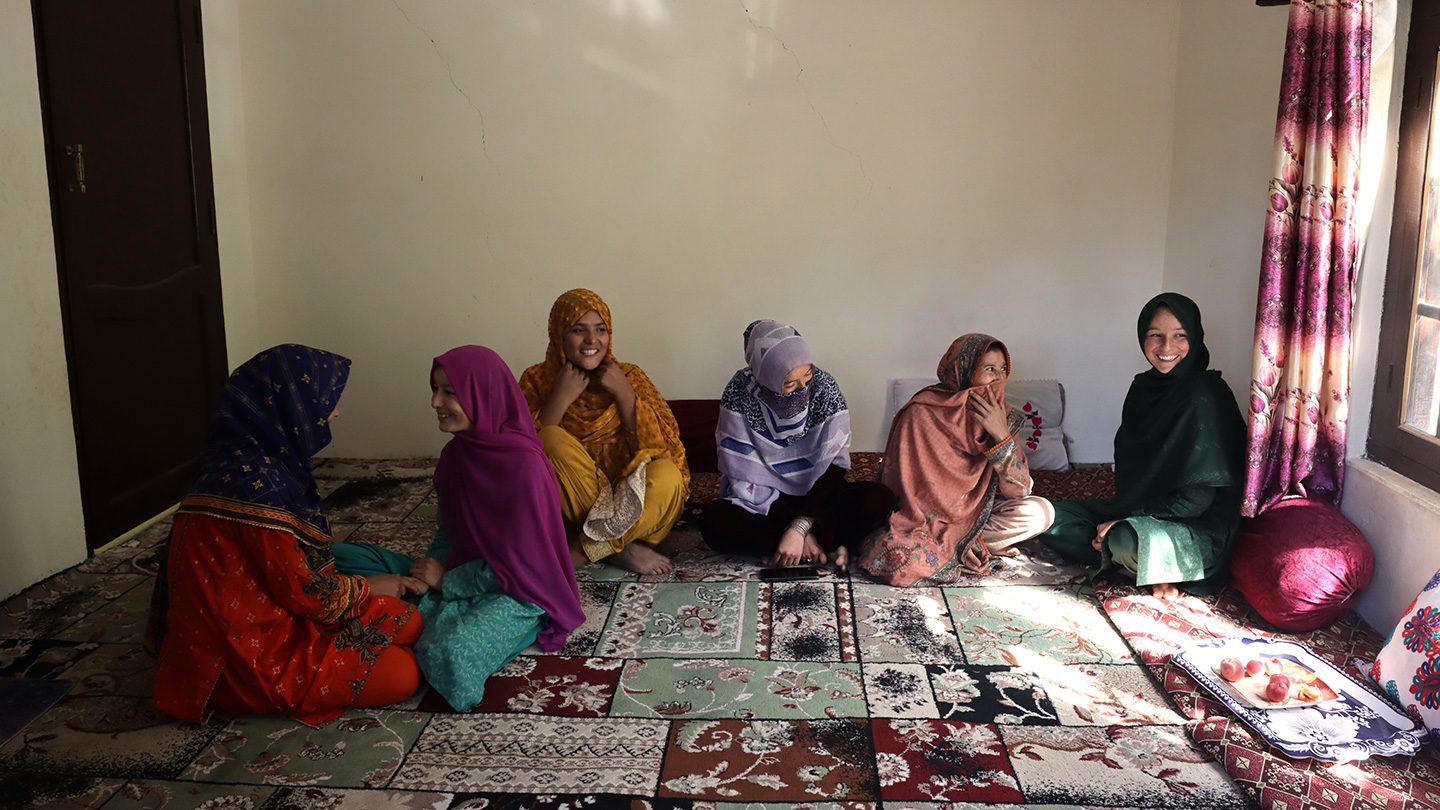
For the people of Ghundus, access to water is more than just an agricultural necessity – it is the foundation of economic stability, gender equality and educational opportunity. Photo: Shameen Raza / UNDP Pakistan
***
The Glacial Lake Outburst Floods Risk Reduction Project in Northern Pakistan (GLOF-II), 2017-2025, is implemented by UNDP in collaboration with the Ministry of Climate Change and Environmental Coordination, with the support of the Green Climate Fund (GCF). It is being implemented in the 24 most climate-vulnerable valleys of Gilgit Baltistan and Khyber Pakhtunkhwa, with the aim of safeguarding communities against the risks posed by glacial lake outburst floods through strengthened climate adaptation mechanisms such as early warning systems, protective walls, rehabilitated irrigation channels and other interventions.